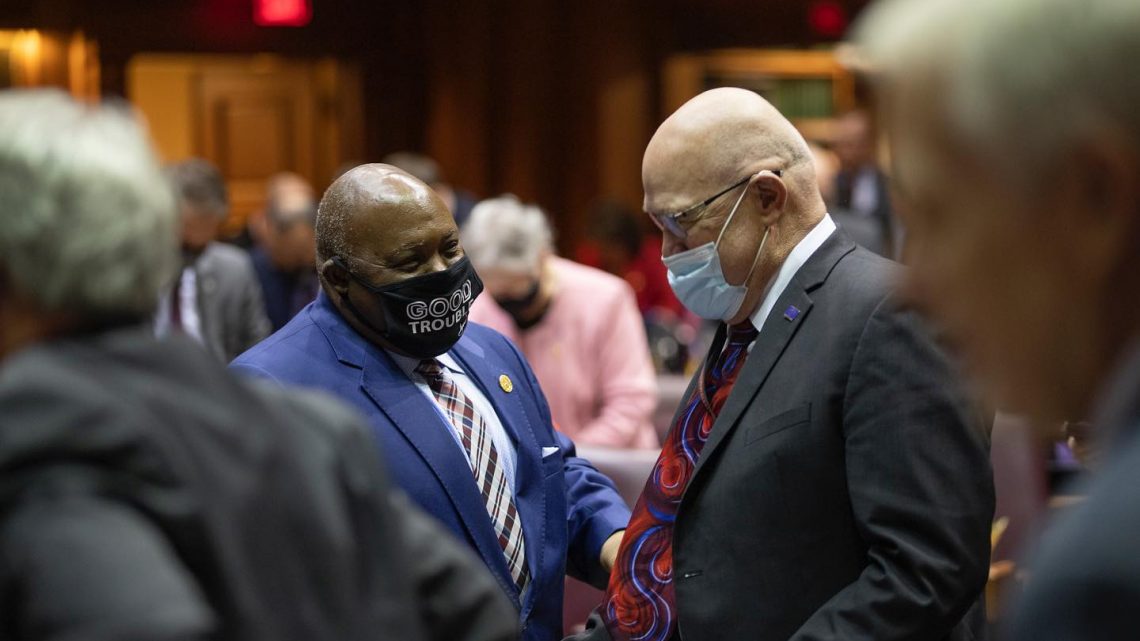by Chris Watts – Indiana Fiscal Policy Institute
Governor Holcomb and legislative leaders announced a breakthrough budget deal this week that’s likely poised to pass the General Assembly as this hits your screen: The two-year, $37.4 billion plan adds another billion dollars to K-12 (versus the version that passed the Indiana Senate last week) for a historic $1.9 billion increase over 2021. The $18.7 billion total investment in K-12 education also closes the $600 million annual ‘compensation gap’ identified by the Next Level Teacher Pay Commission.
Education grabbed the headlines from Tuesday’s budget announcement, and rightfully so. Supporting teachers and students is a popular priority that also pays off in long-term employment and earnings. Data released last week shows that jobs requiring post-secondary education have fully rebounded from the COVID downturn (helping drive the unexpectedly strong revenue forecast with higher average wage growth) while jobs requiring a high school diploma or less remain nearly 10% below pre-pandemic levels.
Raising Indiana’s educational attainment is our best prescription for economic success. But new programs in economic development and infrastructure are also smart investments in our future economy, and deserve more attention.
For example, Governor Holcomb’s Regional Recovery Grant program was initially funded at $150 million. It’s been re-named the Regional Economic Acceleration and Development Initiative (READI) and boosted to $500 million, a budget six times larger than its 2016 predecessor, the Regional Cities Initiative.
Like ‘Regional Cities 1.0,’ READI will invest in regional partnerships around projects to attract people, employers and business opportunities to Indiana’s metropolitan areas. The initiative recognizes quality of life as part of our economic climate, emphasizing talent attraction and retention as an antidote to statewide population growth that has lagged the 50-state average over the last decade.
READI lives up to its acronym, as the program couldn’t come at a better time: Some of the places we expect to anchor these regional collaborations – and power Indiana’s post-COVID recovery – have been struggling with fiscal stress long before the pandemic.
For context, just twenty of our 92 counties account for 75% of Gross State Product and all Indiana’s net population growth since 2010. But local governments in these counties also lost 13% of their total property tax revenues to Indiana’s constitutional caps in 2020, versus 8% across the other 72 counties. Just filling these revenue losses for the next two years would consume triple the total READI budget.
According to a longer-term analysis by Purdue economist Larry DeBoer (the Capacity-Cost Index of Indiana Local Government), increasing population growth actually turns up the budget pressures for cities and counties as new revenues don’t keep up with added costs over time.
Quality of life starts with the basics – well-maintained streets, police and fire protection, parks, trails, and other public assets. But many communities across Indiana can hardly keep pace with essential services, let alone share the costs of truly transformative projects. READI creates capacity for more ambitious plans while other areas of the budget (more than a billion dollars in new or expanded grant programs) help ease ongoing infrastructure burdens on local governments.
The sheer scale of K-12 spending and surprisingly strong commitment to READI mark two major departures from “business as usual” in Indiana’s next budget. They’re also complementary strategies focused on the future. Investing in today’s students strengthens tomorrow’s workforce, and supporting regional quality of life keeps more of these young Hoosiers here when it’s time to put their talents to work in the job market.
This legislative session has been unlike any other: Working through hundreds of bills while socially-distanced in the shadow of a global pandemic, suddenly tasked with making good use of a massive influx of federal funds and reshuffling spending priorities in final days after a truly remarkable revenue forecast. It’s not surprising that the unique circumstances have produced an unprecedented budget plan, with local schools and regional developments emerging as the biggest winners.
Chris Watts is the President of the Indiana Fiscal Policy Institute.














